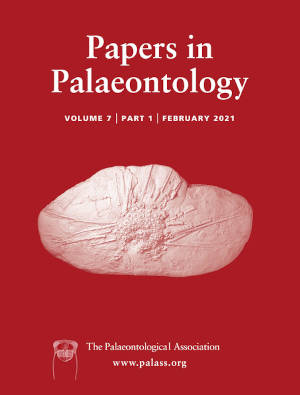Reg. Charity No. 1168330

Burrows with a thick concentric, spiral or eccentric lamination are common constituents of Phanerozoic marine deposits and have been described under different names for more than 150 years. Ambiguous original diagnoses, questionable type specimens and morphological transitions between end members have led to a rather unstable ichnotaxonomy and varying indistinct definitions. This situation, in turn, hinders an application of these ichnotaxa in facies interpretations, and in palaeoenvironmental and evolutionary reconstructions. A revision of this group of trace fossils, collectively assembled under the new ichnofamily Rosselichnidae, aims for its consolidation. It includes the ichnogenera Rosselia Dahmer, Cylindrichnus Toots in Howard, Patagonichnus Olivero & López Cabrera, Artichnus Zhang et al., Lamellaecylindrica Knaust and Bromlichnus Vallon et al., together containing 15 ichnospecies. Burrow morphology, orientation, branching and type of lamination are used as ichnotaxobases. Artichnus serialis isp. nov. is erected, whereas Rosselia erecta (Torell), Rosselia prolifera (Fournier et al.) and Lamellaecylindrica ludwigae (Schlirf) are new combinations. Rosselia erecta is installed as the ichnospecies name for forms that historically have been assigned to Monocraterion isp. A review of established interpretations of potential producers and their ethology of ichnotaxa included in Rosselichnidae reveals that polychaetes and holothurians with a suspension- and deposit-feeding behaviour are best equipped to produce such burrows. The stratigraphic record of Rosselia spans the entire Phanerozoic, whereas the other ichnogenera mainly occur in the Mesozoic and Cenozoic.